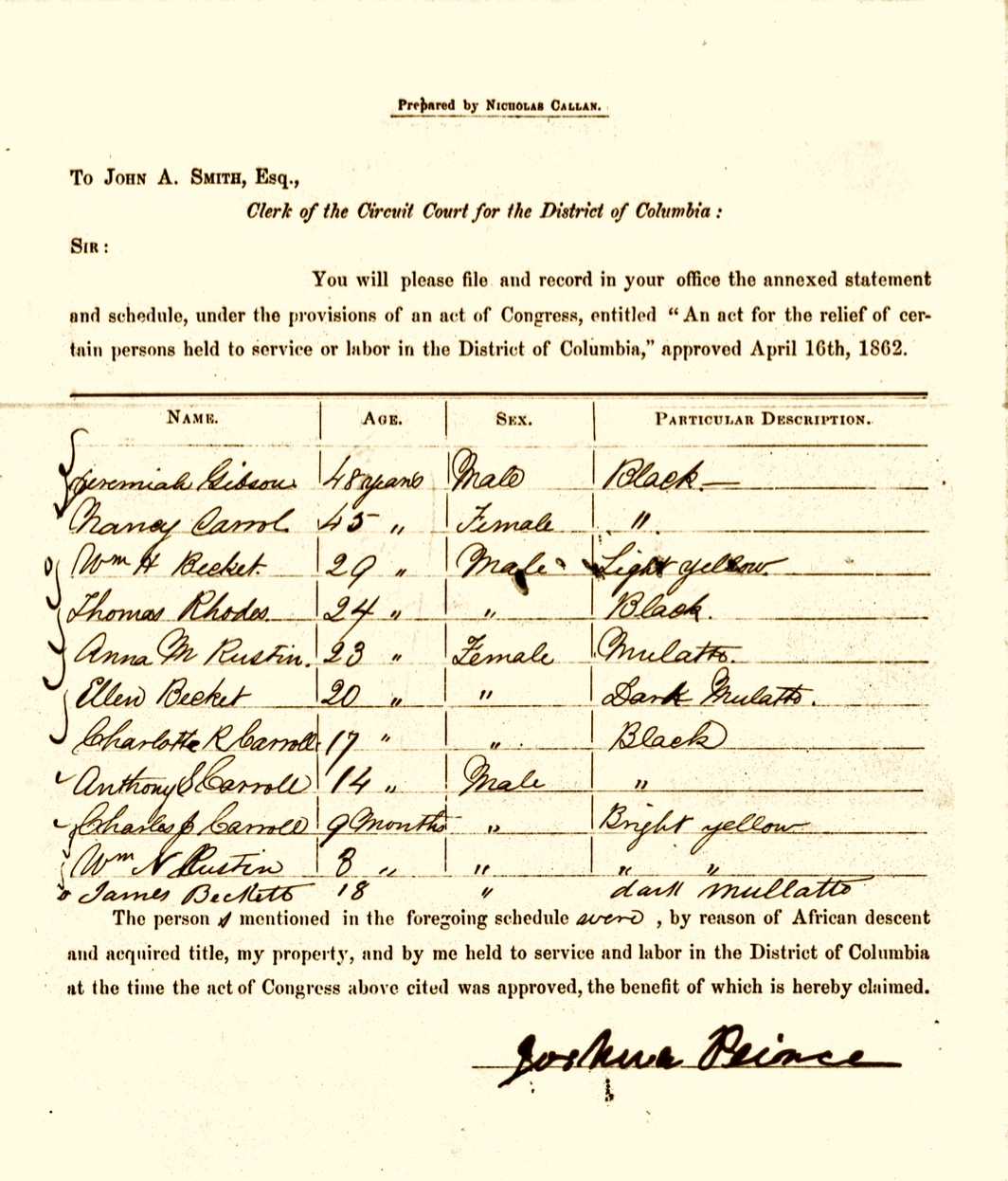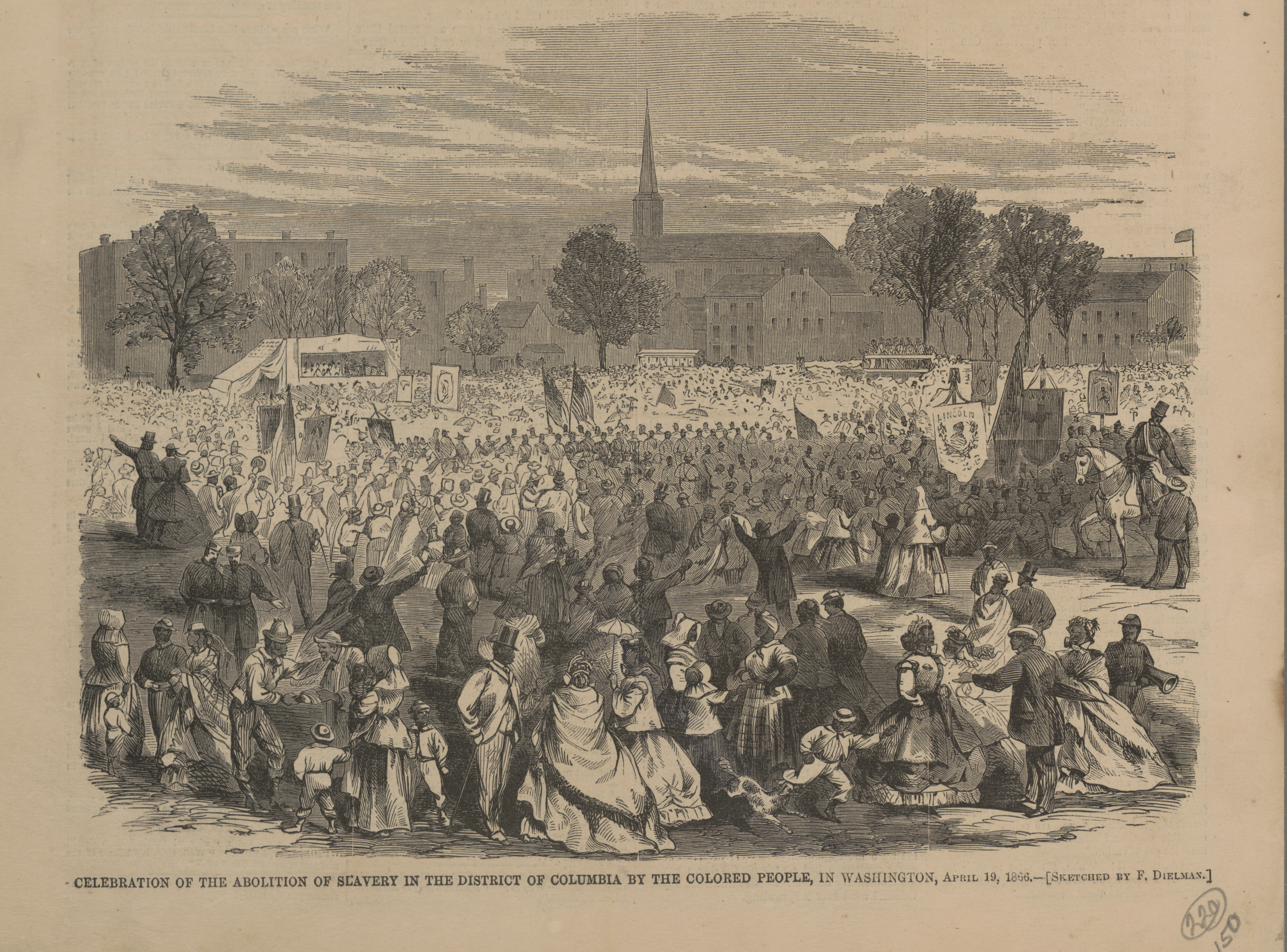Emancipation
After Mary Beckett’s emancipation at age 28, she may have been forced to leave Linnaean Hill. Her 10-year-old son, William, would have stayed behind. Not much is known about William Beckett’s youth, but by the age of 30, he was managing the nursery business owned by his father and enslaver, Joshua Peirce.
Beckett was not freed until April 16, 1862, when President Lincoln signed a bill to end slavery in DC. It was more than eight months before the Emancipation Proclamation. But the end of slavery in the District came with a condition: enslavers like Joshua Peirce would be paid for the loss of “property.”
Joshua Peirce submitted this government form to receive compensation for each of the people he had enslaved, including William Beckett. The petition Peirce submitted also described the occupations of each of the 11 people he had enslaved, including William Beckett, “a Foreman in my garden, greenhouse, and nursery.” Peirce also noted that Beckett was an accomplished carriage driver.
Continue William Beckett’s story →

Joshua Peirce listed each of the people he had enslaved, including William Beckett, on the petition he submitted for compensation.

The first DC Emancipation Day celebration was held on April 16, 1866, after the end of the Civil War. (Library of Congress)
